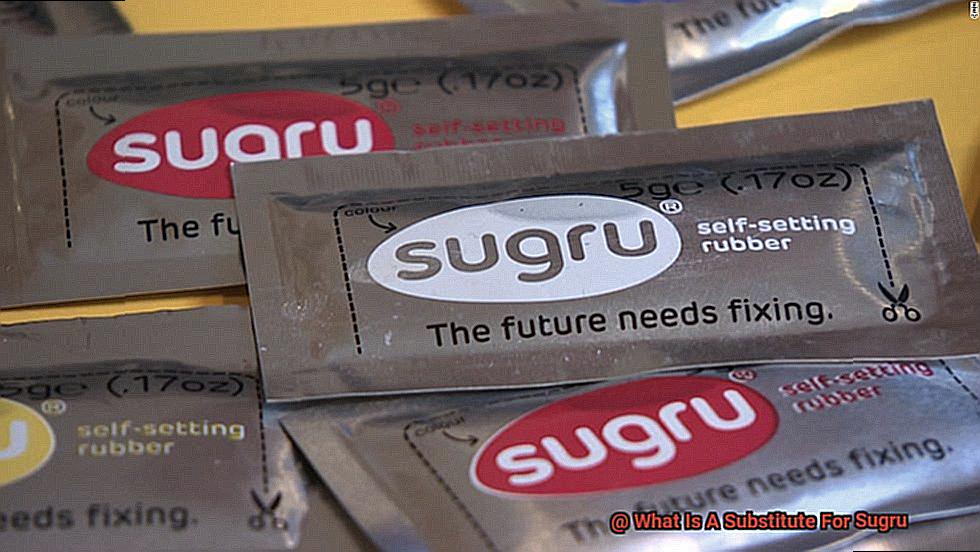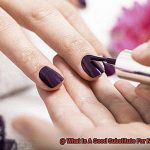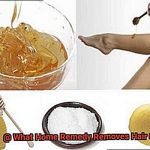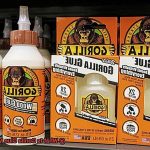Sugru, that magical moldable adhesive that can fix just about anything, has become a household name for its incredible versatility. But what if you’re looking to explore other options or find a substitute for Sugru? Well, my friend, you’ve come to the right place.
A substitute for Sugru is like finding a secret treasure chest filled with similar products or materials that can do the same job. Whether you’re fixing broken objects, getting your DIY on, or sprucing up your home, discovering the perfect substitute opens up a whole new world of possibilities.
In this blog post, we’ll dive deep into a range of alternatives to Sugru. We’ll break down their benefits and help you make an informed decision that suits your specific needs. So buckle up and get ready to unleash your creativity with these fantastic substitutes.
What is Epoxy Putty and How Does it Compare to Sugru?
Contents
- 1 What is Epoxy Putty and How Does it Compare to Sugru?
- 2 Exploring the Benefits of Moldable Plastic as a Substitute for Sugru
- 3 The Advantages of Silicone Caulk as a Sugru Alternative
- 4 Other Potential Substitutes for Sugru
- 5 Understanding the Pros and Cons of Each Substitute Option
- 6 Safety Considerations When Working with Adhesives or Sealants
- 7 Tips for Finding the Right Substitute for Your Project
- 8 Conclusion
When it comes to selecting the perfect adhesive for your DIY projects, understanding the properties and benefits of different options is crucial. This article aims to compare and contrast two popular choices: epoxy putty and Sugru. Both glues possess unique features, applications, and advantages, so let’s delve into the details to help you make an informed decision.
Epoxy Putty: Versatility and Strength
- Application: Epoxy putty typically comes in two separate sticks or tubes that require thorough mixing before use. Proper measurement and thorough mixing ensure optimal results.
- Curing Time: The curing time for epoxy putty varies depending on the brand and specific product, ranging from minutes to hours.
- Strength: Once cured, epoxy putty offers excellent strength and durability, withstanding significant pressure while remaining resistant to water and heat.
- Cost: Epoxy putty is generally more cost-effective than Sugru, making it an attractive option for those on a budget.
Sugru: Moldable and Flexible
- Application: Sugru is ready to use out of the pack, eliminating the need for mixing or measuring. Its pliable consistency allows for easy molding and shaping by hand.
- Curing Time: Sugru typically cures within 24 hours at room temperature, providing flexibility during the application process.
- Flexibility: Sugru offers superior flexibility compared to epoxy putty, making it ideal for projects that require movement or vibration resistance.
- Waterproof and Heat Resistance: Both epoxy putty and Sugru possess excellent waterproof properties, making them suitable for outdoor or water-related projects. Additionally, they can withstand high temperatures, although specific ranges may vary.
- Cost: Sugru is generally pricier than epoxy putty due to its unique moldable and flexible properties.
Exploring the Benefits of Moldable Plastic as a Substitute for Sugru

Moldable plastic, also known as thermoplastic, is an incredibly versatile material that can be molded and shaped when heated. It offers a range of benefits as a substitute for Sugru, making it a popular choice among DIY enthusiasts.
One of the primary advantages of moldable plastic is its exceptional adhesion. Similar to Sugru, it forms a strong bond with various surfaces, including wood, metal, glass, and plastic. This versatility allows for a wide range of applications, from simple repairs to intricate custom creations.
In terms of durability and flexibility, moldable plastic is a true champion. Once cooled and solidified, it becomes incredibly tough and resilient, capable of withstanding everyday wear and tear. This makes it perfect for fixing broken handles or reinforcing weak joints. Additionally, its flexibility allows for easy molding into any desired shape or form using just your hands or simple tools.
Color options are another area where moldable plastic shines. It is available in a variety of hues, offering the opportunity to match or contrast with the materials being worked on. This is particularly advantageous when aesthetics are important.
One of the most fascinating features of moldable plastic is its reusability. Unlike Sugru, which sets permanently once cured, moldable plastic can be reheated and remolded multiple times until you achieve the desired outcome. This not only saves money but also reduces waste, making it an environmentally friendly choice.
Last but not least, moldable plastic tends to be more affordable than Sugru overall. While prices may vary depending on the brand and quantity purchased, it is generally a cost-effective alternative. This makes it particularly appealing to those on a budget.
The Advantages of Silicone Caulk as a Sugru Alternative
Silicone caulk is a fantastic alternative to Sugru, offering a range of advantages for DIY projects. Let’s explore why silicone caulk should be your go-to adhesive.
One of the key advantages of silicone caulk is its flexibility. Unlike other glues that can crack or break under pressure, silicone caulk can withstand movement and stretching without losing its adhesive properties. This makes it ideal for applications where flexibility is required, such as repairing broken handles or reinforcing weak joints.
In addition to flexibility, silicone caulk boasts excellent moisture resistance. It forms a watertight seal that protects surfaces from water damage, making it perfect for use in wet environments like bathrooms and kitchens. Say goodbye to leaks and hello to peace of mind.
Durability is another strong suit for silicone caulk. It can handle extreme temperatures, UV exposure, and harsh chemicals without deteriorating or losing its adhesive strength. Whether you’re working indoors or outdoors, silicone caulk has got your back.
Applying silicone caulk is a breeze. All you need is a tube and a little bit of elbow grease. Simply squeeze the caulk onto the desired surface, and it will adhere quickly and securely. No special tools required.
While silicone caulk may not come in as many colors as Sugru, it still offers options to match your project. Clear and white are the standard choices, but colored varieties are available on the market. You can easily find a caulk that matches your surface and blends seamlessly.
In terms of cost-effectiveness, silicone caulk takes the cake. It’s widely available at hardware stores and online retailers at a fraction of the cost of Sugru. So you can save some money without compromising on quality.
And let’s not forget about shelf life. Once opened, Sugru has a limited lifespan before it starts to harden and becomes unusable. On the other hand, silicone caulk can be stored for an extended period without losing its effectiveness. Talk about convenience.
Other Potential Substitutes for Sugru
First on our lineup is the mighty epoxy putty. This two-part adhesive is a powerhouse when it comes to forming strong and durable bonds. Just like Sugru, epoxy putty can be molded and shaped to fit your needs. It’s perfect for fixing, sealing, and bonding various materials, and it’s resistant to water, chemicals, and heat. So whether you’re working indoors or outdoors, epoxy putty has got your back.
Next up is silicone caulk – the superhero of adhesives.
This versatile substitute is typically used for sealing gaps and cracks around windows and doors. But guess what? It can also be used for small repairs and DIY projects.
While it may not have the same moldability as Sugru, silicone caulk provides a strong and flexible seal that can withstand moisture and temperature changes.
If you’re in need of something that can be shaped and molded when heated, then moldable plastic is your go-to substitute. This amazing material can be softened in hot water or using a heat gun, allowing you to mold it into any shape you desire.
Once cooled, the plastic hardens and retains its shape. While it may not have the same adhesive properties as Sugru, moldable plastic is perfect for creating custom parts or fixing broken objects.
And let’s not forget about specific Sugru alternatives available on the market. These products are designed to be direct substitutes for Sugru, with similar properties such as moldability, strength, and flexibility when cured. Products like Mouldable Glue by HandiTak and InstaMorph Moldable Plastic can be explored as options for those specifically looking for products similar to Sugru.
Remember, while these substitutes can be effective, it’s always important to read and follow the manufacturer’s instructions. And don’t forget to test the product on a small area before diving into a larger project.
Understanding the Pros and Cons of Each Substitute Option
In the world of glue alternatives, understanding the pros and cons of each substitute option for Sugru is crucial. From epoxy putty to silicone caulk and moldable plastic, there are several options available, each with its own unique set of advantages and disadvantages. Let’s take a closer look at these substitutes.
First on the list is epoxy putty, a true superhero in the glue world. This two-part adhesive forms unbreakable bonds, making it perfect for fixing and bonding various materials. Its versatility allows it to be molded into any shape, providing endless possibilities for DIY enthusiasts. However, it’s worth noting that epoxy putty may not have the same level of flexibility or adhesion strength as Sugru.
Next up is silicone caulk, known for its exceptional sealing abilities. This superhero can seal gaps and cracks with ease, making it ideal for small repairs and DIY projects. Its flexible seal can withstand moisture and temperature changes, providing long-lasting results. However, it may not be as versatile as other options and may not excel in all conditions.
For those seeking something truly unique, moldable plastic is the answer. This material softens under heat, allowing it to be molded into any shape before hardening to retain its form. It’s like having your very own superhero that can be shaped when heated. However, moldable plastic may not have the same level of durability or adhesion strength as Sugru.
But wait, there’s more. There are even substitutes on the market designed specifically to mimic Sugru’s properties. Mouldable Glue by HandiTak and InstaMorph Moldable Plastic are just a couple of examples. These alternatives offer the convenience of Sugru with their own unique spin. However, they may still have their limitations in terms of durability or compatibility with certain materials.
While these substitutes offer impressive qualities, it’s important to consider the cons as well. Some alternatives may not be as durable or have the same level of flexibility and adhesion strength as Sugru. Additionally, certain substitutes may not be suitable for specific conditions or materials. Safety concerns must also be taken into account, as some alternatives may contain harmful chemicals or require special precautions during application.
Safety Considerations When Working with Adhesives or Sealants
When it comes to DIY projects and repairs, adhesives and sealants are indispensable tools. However, it is crucial to prioritize safety when working with these materials to avoid accidents or health hazards. In this article, we will outline some key safety considerations that should be kept in mind when working with adhesives or sealants.
Read and Follow Instructions:
Before starting any application, it is vital to carefully read and follow the manufacturer’s instructions. Each product may have specific safety precautions, such as wearing protective gloves, goggles, or masks. Ignoring these instructions can lead to potential risks that can easily be avoided.
Ventilation Matters:
Many adhesives and sealants contain volatile organic compounds (VOCs) that release harmful fumes. To ensure proper ventilation, open windows or use fans to circulate fresh air. Adequate ventilation plays a significant role in minimizing exposure to these potentially dangerous fumes.
Handle Solvents with Care:
Some adhesives or sealants require the use of solvents for cleaning purposes. It is essential to handle these solvents with caution, as they can be flammable or toxic. Use solvents in well-ventilated areas and adhere to proper storage and disposal guidelines to prevent accidents.
Follow Mixing Ratios:
Certain adhesives or sealants, like epoxy resin, require mixing two components in the correct ratio for optimal results. Using an incorrect ratio can compromise the strength and effectiveness of the adhesive. Always follow the manufacturer’s instructions precisely to ensure the best outcome.
Beware of Skin Contact:
Some adhesives or sealants can cause skin irritation or allergic reactions upon contact. If accidental contact occurs, it is important to wash the affected area thoroughly with soap and water. If irritation persists, seek medical attention promptly to prevent further complications.
Accidental Ingestion or Inhalation:
In the event of accidental ingestion or inhalation of adhesives or sealants, it is crucial to seek immediate medical attention. Keep the product container or label handy to provide necessary information to healthcare professionals, ensuring appropriate treatment can be administered.
Proper Storage:
To maintain the quality and safety of adhesives and sealants, store them in a cool, dry place away from direct sunlight and heat sources. Additionally, ensure they are kept out of reach from children and pets to prevent accidents or unintentional exposure.
Tips for Finding the Right Substitute for Your Project
When it comes to finding the right substitute for your project when using Sugru, there are a few key tips to keep in mind. These tips will help ensure that you make an informed decision and find a suitable alternative.
Understand your project requirements
Before you start searching for a substitute, take the time to understand what you need the material for. Consider the specific properties and characteristics that are necessary for your project, such as flexibility, adhesion, or resistance to certain conditions. This will help guide you in finding a suitable alternative that meets your project’s needs.
Research alternative products
There are several alternatives to Sugru available in the market, each with its own unique features. Take the time to research and compare different options. Look for materials that offer similar properties and can be used in a similar manner. Consider materials such as silicone-based adhesives, epoxy putty, or moldable plastics depending on your project’s specific requirements.
Read product reviews and user experiences
To get a better idea of how well a substitute performs, read product reviews and user experiences. Look for feedback from people who have used the alternative product for similar projects. Their insights can provide valuable information about its effectiveness and durability. Pay attention to any potential limitations or drawbacks mentioned by users, as this can help you make an informed decision.
Consider cost and availability
Depending on your budget and timeline, cost and availability may play a role in your decision-making process. Compare prices of different substitute materials and evaluate their accessibility. Some alternatives may be more affordable or easier to find than others. Consider the long-term cost as well, as some substitutes may require frequent replacement or maintenance.
Seek expert advice
If you are unsure about which substitute would be the best fit for your project, seek expert advice. Consult with professionals in the field who can offer guidance based on their experience and knowledge. This can include craftsmen, DIY enthusiasts, or employees at hardware or craft stores. Their expertise can help you make a more informed decision and ensure the success of your project.
bjP3CQ-02B0″ >
Conclusion
In conclusion, discovering a substitute for Sugru unlocks a world of possibilities for DIY enthusiasts and those seeking to fix or create something truly unique. Throughout this article, we’ve delved into an array of alternatives to Sugru, including epoxy putty, moldable plastic, and silicone caulk.
Epoxy putty is the epitome of versatility and strength. Once cured, it boasts exceptional adhesion and durability. Not only is it cost-effective, but it also lends itself well to a wide range of projects. On the flip side, Sugru offers unparalleled moldability and flexibility—perfect for endeavors that require resistance to movement or vibration. Though pricier than epoxy putty, it flaunts properties that are truly one-of-a-kind.
Enter moldable plastic—a fantastic substitute that can be molded when heated and retains its shape once cooled. This remarkable material excels in adhesion and comes in an assortment of vibrant colors, allowing for limitless customization. What’s more, it’s reusable and environmentally friendly.
Then there’s silicone caulk—an adhesive powerhouse capable of enduring movement and stretching without sacrificing its adhesive prowess. Its exceptional moisture resistance and durability make it an ideal choice for damp environments.
Moreover, the market offers specific substitutes designed explicitly to mimic Sugru’s coveted properties. These products grant you similar moldability, strength, and flexibility once cured.
When working with adhesives or sealants, safety should always be paramount. Prioritize your well-being by carefully reading instructions, ensuring proper ventilation, handling solvents with utmost care, accurately following mixing ratios, avoiding skin contact or accidental ingestion/inhalation, storing products correctly, and seeking expert advice whenever necessary.
To discover the perfect substitute for your project:
- Understand the requirements of your endeavor.
- Conduct thorough research on alternative products.
- Immerse yourself in product reviews and user experiences.
- Take into account cost and availability.
- Consult with experts if any doubts arise.






